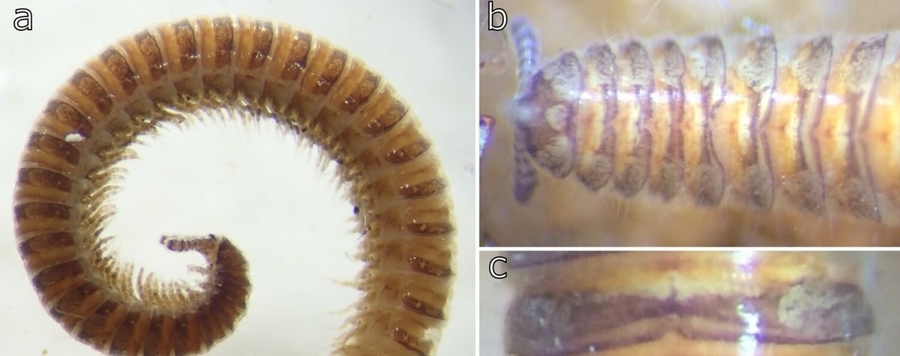
A new polyzoniidan millipede from New Zealand in Great Britain
Millipedes are slow-moving soil organisms, which do not easily disperse to new habitats. However, species can be transported by humans across large distances and be found in anthropogenic habitats like botanical gardens and glasshouses. Thus, several millipede species have been introduced from around the world to Europe. Here we describe three new species of pinhead millipedes (Polyzoniida): Siphonethus dudleycookeorum sp. nov. from Great Britain with close affinities to specimens from New Zealand, and Siphonethus coxaespinosus sp. nov. and Siphonethus obtusus sp. nov. from Tawhiti Rahi (Poor Knights Islands) from New Zealand. Siphonethus dudleycookeorum sp. nov. was initially discovered in Lamorran House Gardens (Cornwall) in Great Britain and could be traced back to New Zealand with DNA-barcoding and comparison to specimens from the New Zealand Arthropod Collection (NZAC). As generic as well as species characters of the Siphonotidae Cook, 1895 are only poorly worked out, the placement of the new species in the only New Zealand genus Siphonethus Chamberlin, 1920 is provisional. Based on the available material and photographs of the holotypes of S. bellus Chamberlin, 1920 and S. enotatus Chamberlin, 1920, we suggest that the species currently classified as Siphonethus belong to at least two separate genera. It can be expected that New Zealand harbours a great diversity of undescribed polyzoniidan millipedes, as a lot of unsorted specimens are present in various collections and already material from the relatively small island Tawhiti Rahi has yielded two species new to science.






